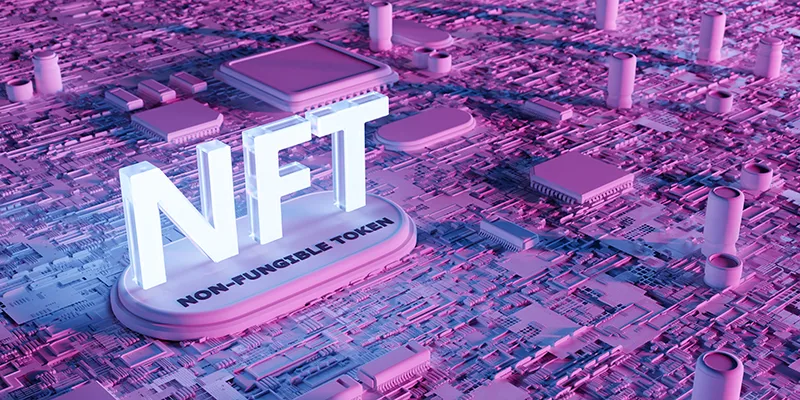Authors
On 3 April 2023, the UK Intellectual Property Office (UKIPO) released updated guidance on how best to classify non-fungible tokens (NFTs), virtual goods, and services provided in the metaverse. The clarifications aim to help those wishing to register a trade mark for goods or services that exist within the metaverse. Many rights owners and trade mark applicants have recently faced the challenge of identifying the correct classes of goods and services, and drafting the correct specification, for the trade marks which they intend to exploit in the metaverse.
As a result, the UKIPO, like other registration authorities around the world, has encountered a rise in trade mark applications that include these terms and corresponding inquiries on their appropriate classification. The guidance seeks to offer clarity on these matters and follows similar, albeit more brief, guidance issued by the EU Intellectual Property Office (EUIPO) in June 2022. Below we set out what the UKIPO has to say about these virtual products, and how that tallies with its EU counterpart.
The Nice Classification system
The Nice Classification system is an international system used for the classification of goods and services in trade mark registration. It divides goods and services into 45 classes, with classes 1-34 for goods and classes 35-45 for services.
The system helps to simplify the process of trade mark registration by providing a harmonised way of categorising goods and services across different countries and languages. The classification system used for trade mark registration provides broad categories for goods and services. However, these categories may not be comprehensive enough, especially in a fast-changing digital industry, where there may be uncertainty about which category a particular good or service should be classified under, or how to phrase a trade mark specification within a given class of goods or services. As a result, trade mark applicants may lack clarity, and guidance from intellectual property offices can be helpful in providing direction.
NFTs
The UKIPO defines an NFT as “a unique unit of data (the only one existing of its type) that links to a particular piece of digital art, music, video etc. and that can be bought and sold”.
It is important to remember that an NFT is a data token that is closely associated with the asset it represents, typically a digital asset. Its main purpose is to signify ownership of the asset, rather than the asset itself. As such, the UKIPO and EUIPO agree that simply referring to a “non-fungible token” within a specification is insufficient as a classification term – the type of digital asset it is associated with must also be specified.
The Nice Classification system already assigns “Downloadable digital files authenticated by NFTs” into class 9. As such, assets like digital art, downloadable graphics or software, and digital audio files that are authenticated by an NFT will fall into class 9.
The EUIPO guidance says no more on the subject. However the UKIPO rightly considers the possibility that NFTs will be used not only in relation to digital assets, but also to authenticate real world goods. In light of this, physical goods defined as being authenticated by NFTs will simply be accepted in their appropriate goods class. For example, a painting, whether or not authenticated by an NFT, will fall into class 16. Similarly, handbags will be categorised under class 18, regardless of NFT authentication.
A similar approach is taken with respect to services. Retail services connected with the sale of, for example, virtual clothing or digital art authenticated by NFTs, fall into the same class as retail services provided with respect to real world products (class 35). The same goes for the provision of online marketplaces for buyers and sellers of goods and services that are authenticated by NFTs.
NFTs have also been used to demonstrate membership of a club or access to an event. Members of the (in)famous NFT brand “Bored Ape Yacht Club” often hold exclusive events for holders of their NFTs. Again, despite its digital aspect, membership of a club or entry to an event linked to an NFT would fall within class 41 as an entertainment service.
Virtual goods
One challenge faced by prospective registrants is identifying the appropriate class of goods for virtual goods. Should applicants designate the class for the equivalent physical product, or use class 9, which covers software and digital assets?
Interestingly, both offices appear to be of the view that the appropriate classification for all virtual goods, regardless of what they relate to, is class 9. This is because the goods to which they relate consist, essentially, of data, such as digital images. The UKIPO gives the examples of virtual handbags, clothing, accessories and footwear all falling within class 9. These types of products are quite similar in nature (i.e., they all relate to fashion) and further guidance on whether it is feasible that a virtual good could fall outside of class 9 would be useful, but for the time being it appears that both the EUIPO’s and the UKIPO’s stance is one of simplicity.
When it comes to drafting the specification, both the UK and EU are aligned in that simply describing “virtual goods” as such lacks the necessary clarity and conciseness, in the same way that “goods” would not be an acceptable description of physical goods. In order to be accepted, these virtual goods will need to be clearly defined, for example “downloadable virtual clothing”.
Virtual services
The UKIPO also gives its stance on virtual services, including those provided in the metaverse. The UKIPO has stated that video auctions and training or educational services will be classified into classes 35 and 41 respectively, regardless of whether they were provided in the metaverse or otherwise. This is on the basis that, irrespective of where the services have been provided, the function that they are fulfilling remains the same.
However, according to the UKIPO, not all services can be treated in the same way both inside and outside the metaverse. Take the example of Irish whiskey distillers Jameson, which recently filed to trade mark virtual bars and restaurants that would offer virtual food and beverages. The UKIPO treats these activities differently as, whilst it may be possible to order food and drink inside the metaverse for delivery or consumption in the physical world, a metaverse avatar “consuming” food and drink does not fulfil the same function and so should not be classified in the same manner.
As a result, these types of non-equivalent services may be most appropriately categorised into “entertainment services”, i.e., providing a virtual reality or metaverse based simulation gaming service.
In relation to virtual services, the EUIPO has rather ambiguously stated that these will be classified in line with the “established principles of classification for services”. In the absence of further clarification in the future, a cautious and pragmatic approach – namely, filing in all potentially relevant classes and being prepared to discuss with the examiner any objections or comments they may have – may be the best course of action.
Conclusion
The protection of intellectual property in the virtual world continues to be a difficult landscape to navigate, from the initial step of getting your IP protected, to defending or bringing legal challenges against those with whom there might be infringement issues (for an example on the latter, see our recent update on the U.S. Hermѐs v. Rothschild NFT trademark dispute).
The guidance highlights the fact that, regardless of whether a brand is contemplating selling digital goods in the metaverse, it is important for trade mark owners to consider the expansion of their trade mark portfolio to incorporate virtual equivalents of their goods into class 9. Relying solely on existing trade mark registrations for physical goods is inadequate, for obvious reasons for brands that plan to sell products in the metaverse, but also for those that want to be able to properly enforce their rights against unscrupulous infringers who plan to sell digital versions of the brands’ goods.
When it comes to registering IP, the UKIPO guidance gives some useful examples and pragmatic advice on how to describe the goods or services to which a potential trade mark application relates. That said, there will undoubtedly be ambiguity in some areas, particularly in an industry that constantly sees itself evolving and innovating. As such, a number of goods and services will still be assessed on a case-by-case basis. With that in mind, trade mark applicants should endeavour to be as clear and concise as possible in the terminology used to describe virtual goods and services in the trade mark application.
The UKIPO makes clear that it acknowledges that these terms represent new types of goods and services in a rapidly evolving technological landscape, and will likely aim to update their guidance periodically as new advancements continue to emerge.
It will also be interesting to see whether the UKIPO’s and EUIPO’s practices will diverge in this matter, as the UK is no longer bound by the EU office’s guidance and rules. It may be necessary in future for rights holders to adjust their approach to class selection, specification drafting, and enforcement litigation for different territories. Accordingly, it is critical to remain up to date on these developments to ensure that IP portfolios remain adequately protected.
In-depth 2023-085



